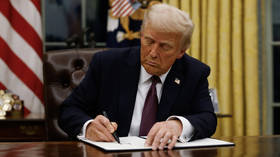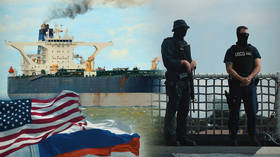Rouhani inauguration: Breaking bread at home and abroad

The pomp and circumstance surrounding the inauguration of President Hassan Rouhani hailed a potentially transformative transition of power in the Islamic Republic, which hopes to mend rifts both at home and on the international stage.
For the first time in 34 years since the Islamic Revolution, Tehran has invited foreigners to the presidential inauguration ceremony.
The ceremony consists of two parts: the handover of power and the
taking of office. The handover of power took place on Saturday,
August 3. It is this aspect of the observance that is most
important for Iran.
The ceremony took place at a facility called Hussainia. It is located in the pedestrian-only neighborhood of Jamaran in northern Tehran. This neighborhood is where Imam Khomeini spent the last ten years of his life. A special passage connects Hussainia to the house of Imam Khomeini. It is here that he addressed the people; it is also here that the special lamentation prayer is read every year to mourn the death of the Prophet’s grandson Hussain.
This facet of the ceremony was only open to a select group of people. Among those present were Assembly of Experts Chairman Mahdavi Kani, top government officials, senior officers of the Islamic Revolutionary Guards, Basij activists (the Basij is a special volunteer corps which includes people from across the social spectrum), prominent scientists, university professors and ambassadors.
The first 90 minutes of the ceremony were broadcast live.
Afterwards, there was iftar (a fast-breaking meal).
The ceremony started at 5 p.m.
The order of seating was perhaps the most important detail.
Supreme Leader Khamenei sat on a chair in the center of a small
platform. On his right-hand side, sitting on the floor were the
outgoing president Mahmoud Ahmadinejad, his supporter Ayatollah
Ahmad Jannati and Ayatollah Sadeq Larijani - the head of Iran’s
judicial system and brother of the parliamentary speaker. Seated
on the floor on the left-hand side were president-elect Rouhani,
Ayatollah Rafsanjani (disqualified from the presidential race by
the Supreme Leader) and Majlis speaker Ali Larijani.

Towards the end of his last term, Ahmadinejad openly accused the Larijani family of corruption, publishing a video which exposed another Larijani brother, Fazel. So, by putting two of the Larijani brothers and the extremely influential Ayatollah Rafsanjani by his side, Ayatollah Ali Khamenei sent a message to the political class and the people of Iran that he expects all political forces to be ready to compromise at this difficult time.
Rouhani gave an opening speech, followed by the Supreme Leader.
The president said everybody should forget about their differences and work together “to save the national economy.” He promised to improve relations with the outside world and do his best to “get the unfair sanctions lifted,” which has been the biggest concern for most Iranians in recent months.
The Supreme Leader emphasized that Iran was a real democracy, where candidates genuinely compete with each other and new presidents replace old ones. This was clearly a shot at some authoritarian regimes in the Arab world, where leadership never changes hands and whose ambassadors were present at the ceremony.
It is very obvious that Iranians are concerned about the economy. People complain that water costs more than gasoline. Of course, gasoline is quite cheap in Iran – only 20 cents a liter (whereas water is 30 cents a liter). But people are not happy with the price of gasoline either as it used to be 10 cents a liter.
Over the past seven months, the price of bread went up from 1,000 rials to 6,000 rials (13 cents), and the price of milk, from 8,000 rials to 18,000 rials. Housing is getting expensive as well: a 100 square meter, two-bedroom apartment in Tehran rents for $600. An average family of three spends $100 a month on food and $15 a month on electricity. Most urban dwellers have a monthly budget of $300 to $500. The government provides subsidies: $15 a month per person for urban dwellers and several times more for people in rural areas. People are concerned about the inflation rate, which has reached 40 percent, depreciation of the rial, and the unemployment rate, which is almost 30 percent in cities.
The official position today is more or less that “it is all
Ahmadinejad’s fault.” But many of the people I talk to
realize that the economic situation is deteriorating because of
the US sanctions, and the sanctions don’t depend on who is the
president of Iran today.

The urban educated class and bourgeoisie, military officers and traders, i.e., about 25 percent of the urban population who did not vote, don’t expect any positive change from Rouhani. Many of them tell me they expect the new president to fail.
But the majority of Iranians, those not so wealthy, farmers and industrial workers, in spite of all their hardships and concerns about the economy, are somewhat alarmed by the fact that their leaders talk so much about the economic situation and compromising with the outside world.
Many of them say they want the Islamic Revolution to continue. They don’t think the country has veered off the right track yet, but they are mindful of increasing tolerance for people who don’t follow the dress rules adopted in a referendum 32 years ago. Time and again, I hear from women of different educational levels and social status that they want hijab to stay.
While international media focus a lot on Iran’s anti-Israeli rhetoric, Iranians themselves don’t see it as something special. Many of them were perplexed by the stir Rouhani’s remarks about Palestine caused across the globe.
You have to realize that the comment Rouhani made a day before
his inauguration was given at a rally in support of Palestine and
Al-Quds (Jerusalem). Imam Khomeini established Al-Quds Day 33
years ago, when Yasser Arafat came to Iran. Since that time, Iran
always commemorates Al-Quds Day on the last Friday of Ramadan.
Last year, the Organization of the Islamic Conference recognized
Al-Quds Day and encouraged Muslims around the world to mark it.

“In our region, there’s been a wound for years on the body of the Muslim world under the shadow of the occupation of the holy land of Palestine and the beloved Al-Quds,” Rouhani said on Friday. International media misquoted him as saying that Israel should be eliminated as “an old wound on the body of Palestine.”
While most Muslims agree that it was unfair to establish the nation of Israel on Palestinian lands, it is Iran that has been getting most of the heat from international media over the past eight years. They misquoted Ahmadinejad as well, claiming he wanted to “wipe Israel off the map,” whereas what he said in reality at the beginning of his presidential term was that this injustice could not go on forever. In other words, his words were twisted very much like Rouhani’s remark about the “wound.”
Speaking at the ceremony on Saturday, the Supreme Leader touched on the subject again, saying that Iranians will never stop supporting al-Quds.
The inauguration will conclude with the final ceremony, which will take place Sunday night, when Rouhani officially appears as the new president before the parliament and foreign guests – presidents, prime ministers and parliamentary speakers.
The statements, views and opinions expressed in this column are solely those of the author and do not necessarily represent those of RT.
The statements, views and opinions expressed in this column are solely those of the author and do not necessarily represent those of RT.













